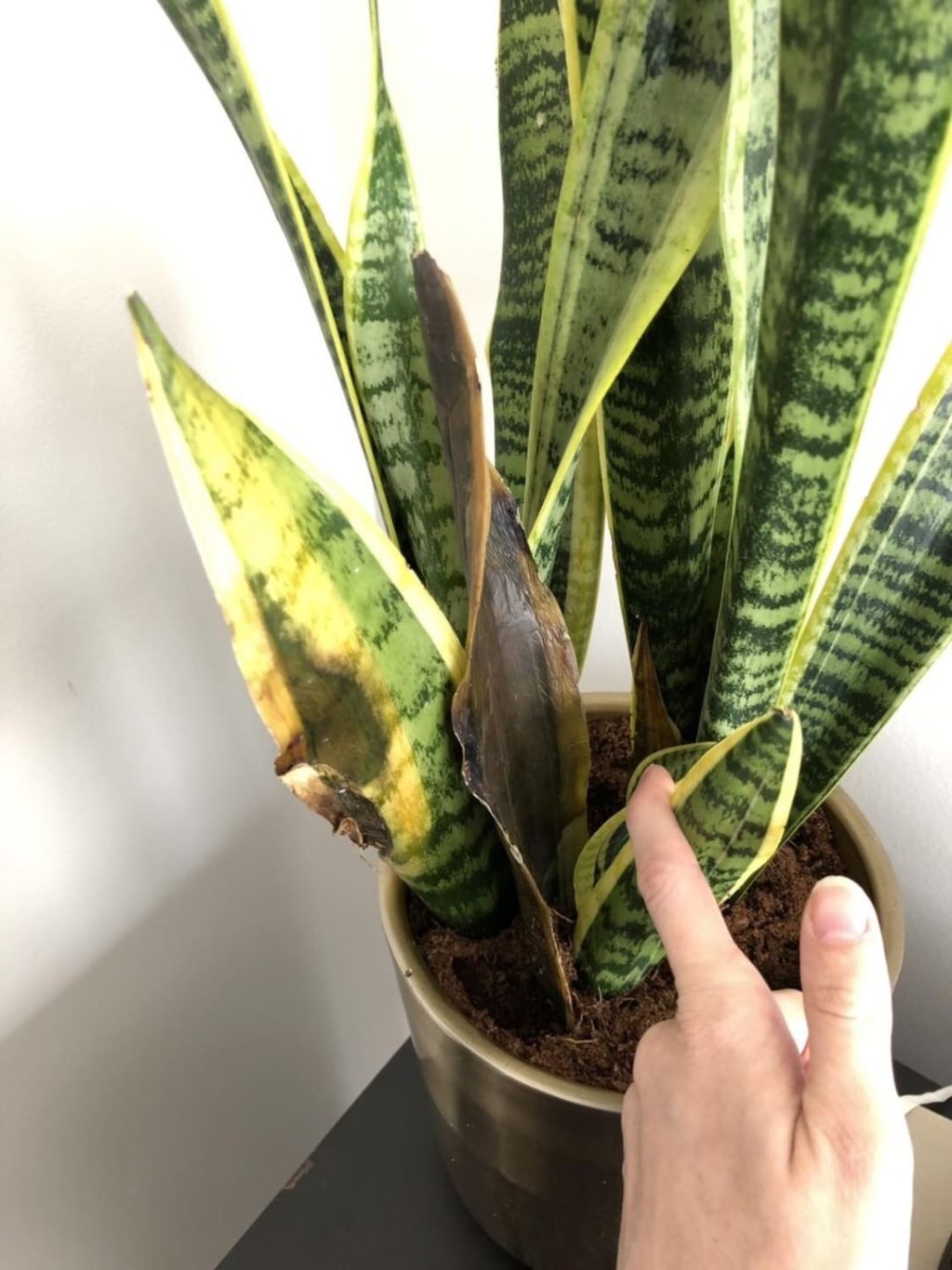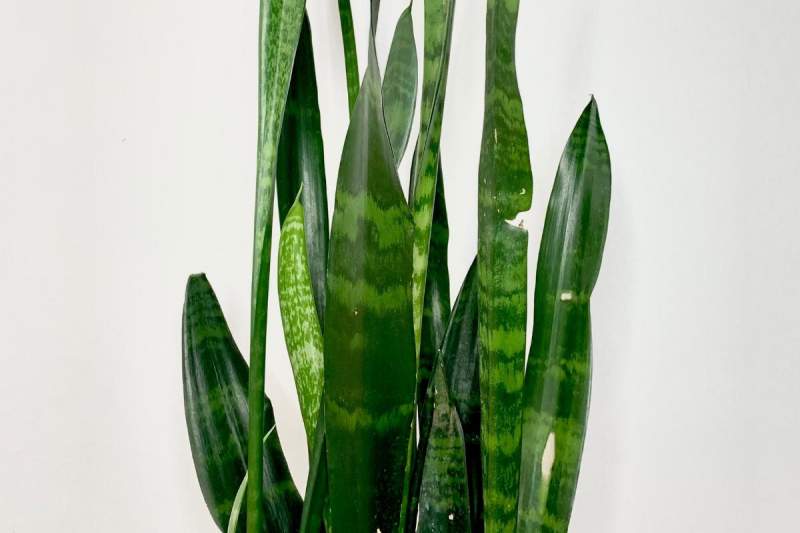Snake Plant Leaves Turning Yellow for Dummies
Wiki Article
Not known Facts About Snake Plant Leaves Turning Yellow
Table of ContentsEverything about Snake Plant Leaves Turning YellowAll About Snake Plant Leaves Turning Yellow6 Easy Facts About Snake Plant Leaves Turning Yellow ShownThe 45-Second Trick For Snake Plant Leaves Turning YellowThe Only Guide to Snake Plant Leaves Turning YellowSome Ideas on Snake Plant Leaves Turning Yellow You Should Know
If you prepare to have a snake plant in your home, below are a number of points to keep in mind: As well much water is this plant's weak point. Place a snake plant in a well-drained pot to stay clear of overwatering, as it can trigger deteriorating. Just water the soil when it's entirely dry.If completely shaded, the plant can plain and the fallen leaves may become a bit saggy. Snake plants are not only easy to look after but simple to increase. Simply follow these directions: Cut off a healthy and balanced leaf near its base and make an upside-down V cut at the base. Put the fallen leave in a clean jar of water.
Once roots have started to develop (3 to 5 weeks), you can maintain in water or transfer to soil. Place a serpent plant in a well-drained pot to prevent overwatering, as it can cause rotting. Make certain the pot has a hole to permit draining. Snake plants are verified to be as beneficial as they are aesthetically appealing.
Brush dirt from the origin structure or root. Make use of the knife to split the plant right into areas, keeping the roots for each area intact. Replant sections right into tidy pots full of the potting soil. Water and area in a partly sunny place. Descendants or pups are baby plants emerging from the dirt.
The Best Strategy To Use For Snake Plant Leaves Turning Yellow
Use a clean and sterile reducing device to remove a long, healthy and balanced fallen leave at its base (Snake Plant Leaves Turning Yellow). Submerge the cut end of the leaf in a tidy container of water and set the jar in a partly bright area. Or enable the cut end to callous over for 24 hours and afterwards pot it cut-end downNight-blooming blossoms are great smelling and comparable in appearance to lilies. Be sure to pick a cultivar that grows, due to the fact that not all serpent plant selections will certainly blossom. The Spruce/ Alonda Baird The Spruce/ Alonda Baird The Spruce/ Candace Madonna Snake plants expand ideal with eight to ten hours of indirect sunlight or a few hours of early-morning straight sunshine.
Throughout winter, examine the plant's dirt mix every two weeks or sothe plant could need to be watered just when a month. If you discover its fallen leaves are breakable and dry, water right away. During springtime and summertime when the plant is in energetic growth, sprinkling every two weeks or so is generally adequate.
To control elevation, eliminate the tallest leaves at the soil line with a sterilized cutting device. Damaged fallen leaves can be removed at any moment, nevertheless, winter trimming can cause stress. Repot your serpent plant every 3 to five years, or when you see origins growing out of the openings in all-time low of the pot.
How Snake Plant Leaves Turning Yellow can Save You Time, Stress, and Money.
The ideal time to repot remains in spring. When repotting a snake plant, position it at the very same level as it was in the original pot. Serpent plants do not tolerate temperature levels less than 50F. If you are growing the plant outdoors, bring it inside and keep it in a more info here warm place where it's secured from cool drafts.A lot of can be gotten rid of by hand or with a mild spray of water. Serpent plants are one of the most convenient plants to preserve and can last for many years.
Possessing a snake plant has several advantages. Easy to care for and an excellent first plant for starting gardeners, Distinct shape adds elevation and interest to houseplant collections, Adapts to various light conditions and tolerates low-light atmospheres, Plant is flexible and almost undestroyable, Portable growth routine fits well in small areas, Dry spell resistant FAQ Serpent plant earned its name since of the method its lengthy, thin leaves with distinctive red stripes and other markings look like her comment is here some kinds of snake.

A Biased View of Snake Plant Leaves Turning Yellow
Snake plants are easy-care houseplants. This tutorial on repotting Serpent Plant kingdoms reveals you the actions to take, the mix to use, and when you ought to repot your snake plant.Their spiky, formed vegetation is so intriguing to me. And also, you can ignore them the majority of the time, and they enjoy as can be! I really repotted 5 of my plants however you just see 2 of them below. I call this task the "Serpent Plant switcheroo" due to the fact that I swapped out containers and locations they were in.
That's why I include in the delicious and cactus mix due to the fact that it's beefy and well oxygenated (Snake Plant Leaves Turning Yellow). I additionally throw in a couple of handfuls of natural compost as I'm planting (I go much lighter on both this and the worm compost when repotting houseplants as compared to container plants in my garden) and a 1/2 layer topping of the worm garden compost
Both are complete of top notch active ingredients. Make certain whatever potting soil you use says it developed for interior plants on the bag. I use Tank's regional compost.
The Ultimate Guide To Snake Plant Leaves Turning Yellow
The top four are what I utilized for my mix.
If your own is in a 6 grow pot, then an 8 pot would certainly be the dimension you would certainly desire to make use of. Because Sansevierias like to spread out as they expand, I have actually found that they do not require a deep pot. A deep pot has more soil mass near the bottom which could stay too wet which leads to root rot.
You can see the thick rhizomes they save water along with the roots & leaves. Gather your dirt mix products. (Occasionally I blend them up ahead, and other times in the pot as I go along. Loosen the plants from their pots. For one plant I made use of a plain knife and for the various other, I delicately pushed on the expand pot.
The Ultimate Guide To Snake Plant Leaves Turning Yellow
Once the plant runs out the pot, gauge how much soil mix you'll require to elevate the top of the origin round up to 1/2 to 1 listed below the top of the brand-new pot. Add the mix in. Location the plant in the pot and fill in around the sides with mix.Report this wiki page